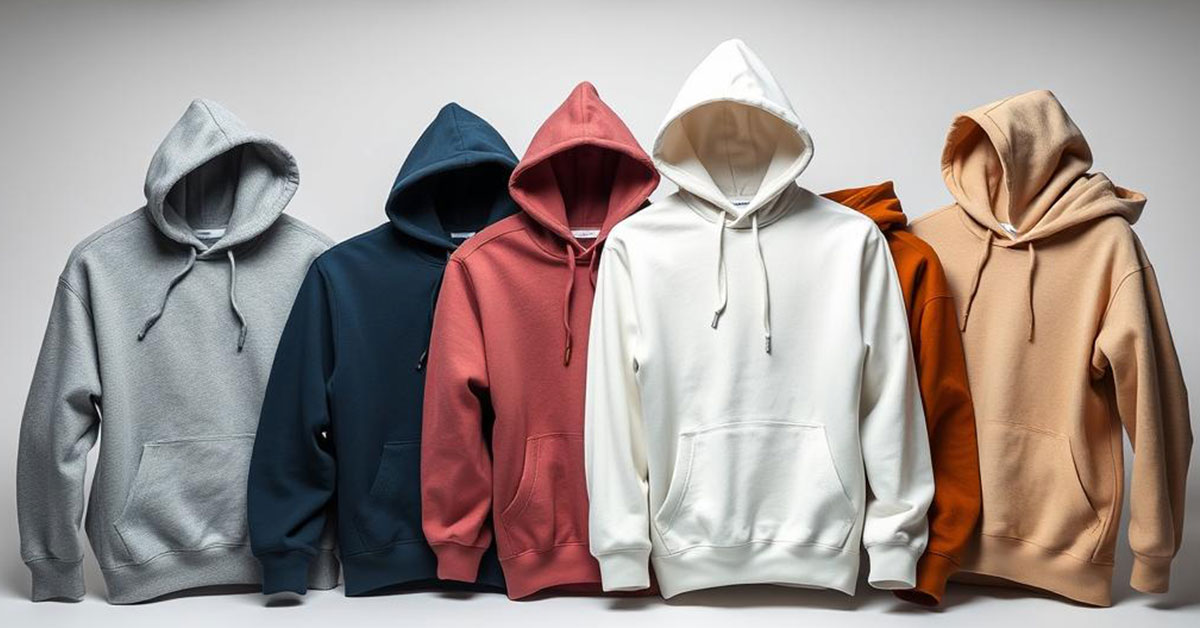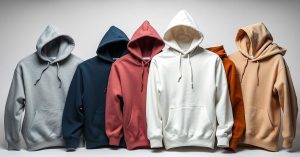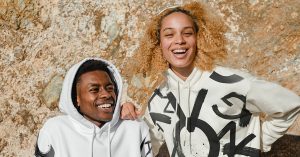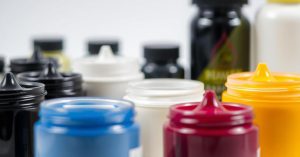Custom hoodies and sweatshirts work well for a wide range of applications, from merch and giveaways to employee uniforms and print-on-demand products, making logos and artwork visible everywhere while helping brands connect with their fans and teams in ways that feel personal and lasting. The right hoodie becomes more than just apparel; it turns into a walking billboard that carries your message, strengthens brand identity, and creates genuine connections with the people who wear it.
Choosing the right blank hoodie depends on several interconnected factors including your audience, design complexity, printing method, budget constraints, and intended use, which means a cotton-heavy hoodie might be perfect for retail collections while polyester blends work better for sublimation or athletic wear applications. Material composition, fabric weight, and construction quality matter significantly when printing because they determine how well ink adheres to the surface, how the final product feels against the skin, and how long the garment and its printed design will last through repeated washing and wearing.
Key Takeaways
There’s no single best hoodie for every situation, which is why matching the blank to your specific audience and print method matters more than choosing the most expensive or most popular option. Material composition, fabric weight, and stitch density work together to determine print quality and durability, so understanding how these factors interact helps you make better purchasing decisions. Style and features affect where and how designs can be placed, which means thinking through your artwork placement before ordering blanks saves headaches later. Screen printing, DTG, DTFlex, sublimation, and embroidery each favor different blanks because of how ink or thread interacts with various fabric compositions and constructions. Ordering samples and carefully balancing quality versus price when choosing the best blank hoodies for printing protects you from expensive mistakes and ensures your final products meet or exceed customer expectations.
Table of Contents
Why choosing the right blank hoodie matters for screen printing
Choosing the right blank hoodie serves as the foundation of a clean print and satisfied customers, which is why experienced printers and decorators spend considerable time testing different blanks before committing to large orders. The right garment keeps colors true to your original design, reduces waste from failed prints or poor adhesion, and saves time by working smoothly with your chosen decoration method rather than fighting against it. Success in custom apparel comes down to matching the print method and design complexity to the fabric composition and construction quality, which requires understanding how different materials respond to various decoration techniques.
How fabric composition affects print quality
Cotton and blends like 100% ring-spun cotton are soft, breathable, and feel natural against the skin, which is why they work great with DTG and fine-detail screen printing that requires ink to blend into the fabric rather than sitting on top where it can crack or peel. Cotton-poly blends offer an appealing mix of softness and durability that makes them versatile choices for many printing applications. A 50/50 cotton-poly mix performs well with screen printing and DTFlex while shrinking less than pure cotton, which matters when you need consistent sizing across large orders or when customers expect garments to maintain their fit after washing.
Polyester and recycled polyester are best suited for sublimation and all-over prints because they produce bright, lasting colors that won’t fade even after dozens of washes, though they feel different from cotton in ways that some customers notice and prefer while others find less comfortable. Choosing the right fabric composition determines whether your prints look sharp and vibrant or fade and crack after the first wash, which directly impacts customer satisfaction, return rates, and your reputation as a quality provider. Natural fibers like cotton absorb moisture and breathe well, making them ideal for everyday wear and retail collections, while synthetic blends offer performance characteristics that athletic teams and activewear brands value for their moisture-wicking properties and durability under stress.
Weight, feel, and stitch density impact durability and ink adhesion
Fabric weight matters more than most people realize because it affects everything from how the hoodie feels when worn to how well ink adheres during printing and how the garment drapes on different body types. Light hoodies in the 4-7 oz range are good for layering and sports because they don’t add bulk or restrict movement, making them popular for spring and fall weather or indoor athletic activities. Midweight options around 8 oz strike the ideal balance for printing because they offer enough substance to support detailed graphics without being so heavy that they require special handling or modified press settings, which is why they dominate the custom apparel market and satisfy the widest range of customers.
Heavyweights above 9 oz add warmth and a premium feel that customers associate with quality and durability, but they may need stronger inks, longer drying times, or adjusted press temperatures to achieve proper curing and adhesion. High stitch density and tight knits create smoother print surfaces and better ink hold because there are fewer gaps between fibers where ink can pool or fail to bond properly, resulting in cleaner lines, more vibrant colors, and prints that last longer through washing and wearing. Bulky fleece with a loose knit can trap ink in ways that change the hand feel from soft to stiff or cause uneven color distribution that makes your designs look amateurish rather than professional, so paying attention to the fabric face before finalizing your blank selection protects your reputation and reduces waste from failed prints.
Moisture-wicking finishes like DryBlend™ on Gildan pieces improve activewear performance by pulling sweat away from the skin and helping it evaporate quickly, but they might need special inks, pre-treatment solutions, or modified press settings to achieve proper adhesion because the chemical treatments that create moisture-wicking properties can also interfere with how ink bonds to fibers.
Style, cut, and features that influence print placement
Pullover hoodies offer large, uninterrupted spaces for prints, especially on the chest and back where you have room for bold graphics, detailed artwork, or large logos that make a statement and increase brand visibility. Zip-up hoodies limit center-front prints due to the zipper creating a visual and physical barrier that breaks up your design space, but left-chest and sleeve prints work well for these styles because they avoid the zipper while still providing prominent branding opportunities that customers notice and appreciate. Kangaroo pocket designs can interfere with low-front prints by creating folds and seams that disrupt ink flow or cause uneven pressure during printing, so planning your artwork placement with pocket location in mind prevents disappointing results and wasted materials.
Three-panel or double-lined hoods affect hood graphics because the extra layers and seams create thickness variations that can cause uneven pressing, inconsistent ink coverage, or registration problems when printing multi-color designs that require precise alignment. Raglan sleeves and visible seams, commonly found in AS Colour and SOL’S raglan cuts, reduce flat printing areas available for large graphics but offer sleeve logo or offset chest mark opportunities that create distinctive looks different from standard center-front placement. Fit and fashion cuts change how a logo looks on the body because oversized silhouettes alter logo scale and positioning relative to the wearer’s frame, while slim-fit brands like Bella + Canvas change placement choices by offering less fabric area but a more tailored appearance that appeals to fashion-conscious customers.
Matching fabric composition and weight to your specific print method and design complexity protects your investment and ensures results that satisfy customers rather than disappoint them. Checking seams, pocket placement, and hood construction before finalizing artwork prevents costly reprints and wasted materials by identifying potential problems before they occur. Ordering samples to test adhesion, wash durability, and final appearance gives you confidence that your chosen blank will perform as expected when you scale up to full production runs.
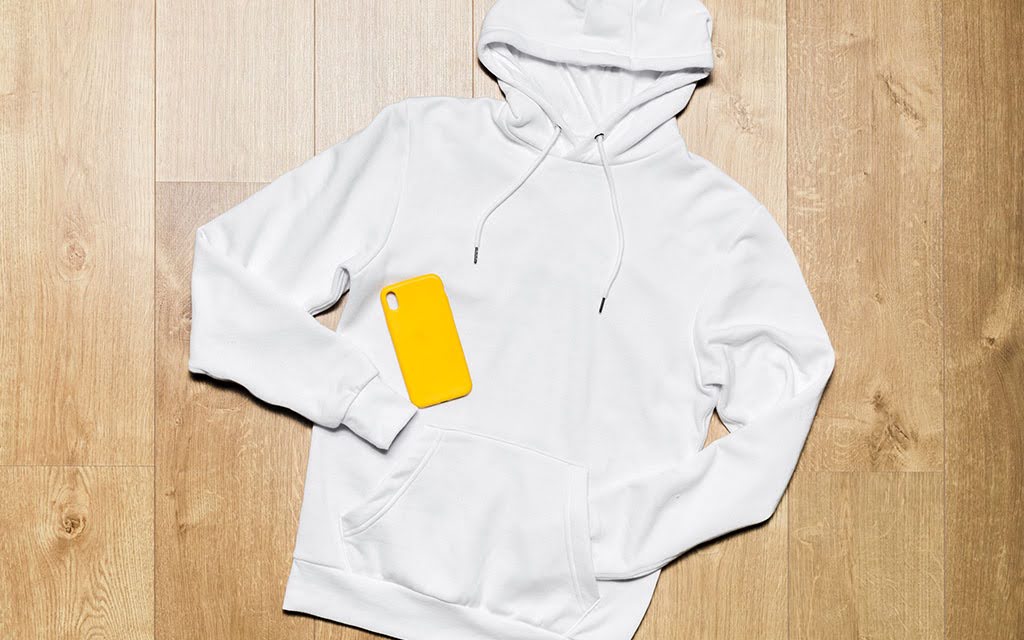
Best hoodie for screen printing
Choosing the right blank makes the difference between a print that lasts through years of washing and wearing and one that cracks, fades, or peels after just a few washes, which directly impacts customer satisfaction and your reputation in the custom apparel market. This guide helps you compare options clearly and confidently by covering what to look for in a quality blank, which hoodie types perform best for different applications, and why testing samples before committing to bulk orders matters more than most buyers realize until they’ve made an expensive mistake.
Midweight pullover hoodies deliver the best results for large chest prints and full front designs because they offer substantial, flat surface area without seams or closures interrupting your artwork, and their weight supports bold graphics without showing through to the back or feeling flimsy when customers handle them in stores or online. Gildan and Independent Trading Co have built reputations for quality and consistency, with prints that stay clear and bright after dozens of washes rather than fading to shadows of their original appearance, which explains why they dominate wholesale orders and bulk purchasing from schools, organizations, and businesses that need reliable results across large quantities.
Zip-up hoodies work well for small prints and left-chest logos because the zipper creates natural framing that draws attention to smaller design elements, though you should avoid large prints that span the zipper because the separation creates visual discontinuity and the zipper itself can cause pressing problems that result in uneven ink coverage or poor adhesion. Bella + Canvas zip hoodies feature smooth faces that support clearer prints on small design areas because their tight weave and quality construction create consistent surfaces without thick seams or texture variations that can interfere with detailed artwork.
Fashion pullovers from Bella + Canvas and Cotton Heritage are great for detailed prints and DTG applications because their ring-spun blends create exceptionally smooth surfaces that reproduce fine lines, subtle color transitions, and photographic images with clarity that coarser fabrics simply cannot match. These premium blanks make prints clearer and feel softer because the yarn spinning process creates finer, more consistent fibers that produce tighter weaves and smoother fabric faces, which matters significantly when your designs include small text, detailed illustrations, or photographic elements that require precise reproduction.
Heavyweight work hoodies from Carhartt are perfect for tough prints that need to last through demanding conditions because these garments are built for durability first, with heavy fabrics, reinforced stitching, and construction quality that holds up in construction sites, warehouses, and outdoor work environments where lighter blanks would fail. They work well with thick inks or DTFlex for durable prints that maintain their appearance through years of hard use and frequent washing, making them ideal for work uniforms, company apparel, and safety gear that represents your brand in demanding professional environments.
Eco-friendly and specialty hoodies appeal to customers who care about sustainability and want their purchases to align with their environmental values, and they print well with DTG and embroidery because their natural fibers and quality construction support multiple decoration methods. These options work well for brands that want to position themselves as environmentally conscious and socially responsible, giving you a marketing advantage with customers who actively seek sustainable products even when they cost slightly more than conventional alternatives.
| Hoodie Type | Best Printing Methods | Ideal Use Cases | Weight Range |
| Midweight pullover | Screen printing, DTG, DTFlex | Large chest prints, retail collections, promotional merch | 7-9 oz |
| Zip-up hoodies | Screen printing, heat transfer, embroidery | Left-chest logos, corporate uniforms, layering pieces | 7-10 oz |
| Fashion pullovers | DTG, screen printing | Detailed artwork, soft-hand prints, boutique retail drops | 6-8 oz |
| Heavyweight work hoodies | Screen printing, DTFlex, embroidery | Workwear uniforms, durable branding, outdoor teams | 10-13 oz |
| Eco-friendly hoodies | DTG, embroidery, water-based inks | Sustainable brands, conscious consumers, premium merch | 7-9 oz |
Top brand picks and what they’re best for
Choosing the right brand makes a noticeable difference in print quality, fabric feel, and overall cost because each manufacturer focuses on different market segments and prioritizes different features based on their target customers and competitive positioning. Buyers searching for the best blank hoodies will discover clear advantages with popular brands that have proven track records, consistent quality, and reliable supply chains that keep production running smoothly. This guide helps you choose based on budget constraints, desired feel and quality, and decoration needs so you can match your blank selection to your specific project requirements rather than guessing or choosing based solely on price or brand recognition.
Gildan: budget-friendly, wide sizes and color range
Gildan dominates the budget-conscious market when you need to save money while still finding a wide range of sizes, colors, and styles that cover most standard custom apparel applications from promotional giveaways to corporate uniforms. The brand offers sizes from S to 5XL across most styles and provides dozens of color options that let you match brand guidelines, coordinate with team colors, or offer variety that appeals to different customer preferences. Styles like the Heavy Blend and the Gildan 18500 pullover perform well for basic printing applications where decoration quality matters more than fashion-forward styling or premium hand feel, making them workhorses for screen printers, promotional product distributors, and organizations ordering in bulk.
JERZEES: pill-resistant midweight fleece, great for durability
JERZEES focuses on creating durable fleece with its proprietary NuBlend technology, which combines cotton and polyester in ways that resist pilling, maintain shape, and feel soft even after repeated washing and wearing. Midweight options in the 7.2-8 oz range hit the sweet spot for everyday wear because they offer enough warmth for cool weather without being so heavy that they feel stiff or restrict movement, making them versatile choices that work from early fall through late spring in most climates.
Bella + Canvas: fashion-forward, ring-spun blends for premium prints
Bella + Canvas offers softness and modern designs that appeal to fashion-conscious customers who notice and care about fabric quality, fit, and construction details that distinguish premium apparel from budget alternatives. The brand’s ring-spun and airlume combed and ring-spun cotton blends ensure crisp prints with exceptional detail reproduction because the spinning and combing process creates finer, more uniform fibers that produce smoother fabric faces ideal for DTG and fine-detail screen printing. These superior surfaces make Bella + Canvas ideal for fashion-forward items where soft hand feel, retail-quality appearance, and premium positioning justify higher blank costs that get passed on to customers who value quality over bargain pricing.
Independent Trading Co.: unique colors and heavyweight options
Independent Trading Co built its reputation on bold colors and heavier garments that stand out from the sea of basic blanks dominating the wholesale market, giving brands and printers access to unique options that help their products stand apart from competitors using standard Gildan or Hanes. The SS4500 midweight hoodie and its zip variants perform exceptionally well for small-run brands that need distinctive bases for their designs because the quality construction and unique colorways create starting points that already look more interesting than commodity blanks even before decoration.
| Brand | Strength | Best Uses | Price Point |
| Gildan | Affordable, broad sizes and color range | Wholesale hoodies, bulk campus apparel, budget retail, promotional items | $ |
| JERZEES | Pill-resistant NuBlend fleece, reliable durability | Uniforms, giveaways, durable midweight pieces, corporate apparel | $ |
| Bella + Canvas | Ring-spun blends, premium hand-feel, fashion-forward styling | Retail drops, premium merch, detailed prints, boutique collections | $$ |
| Independent Trading Co. | Unique colors, midweight to heavyweight options (SS4500), distinctive styling | Boutique streetwear, small-run drops, standout colorways, premium positioning |
How printing method affects the best blank hoodie choice
The right printing method changes which blank hoodie will perform best because small differences in fabric composition, weight, and construction can significantly alter color vibrancy, hand feel, durability, and how well designs survive washing and wearing. Choosing between screen printing, DTG, DTFlex, sublimation, embroidery, and heat transfer starts with understanding your artwork complexity and the garment type you’re decorating, whether standard pullover hoodies, fashion-forward styles, or zip-up options that present unique challenges and opportunities.
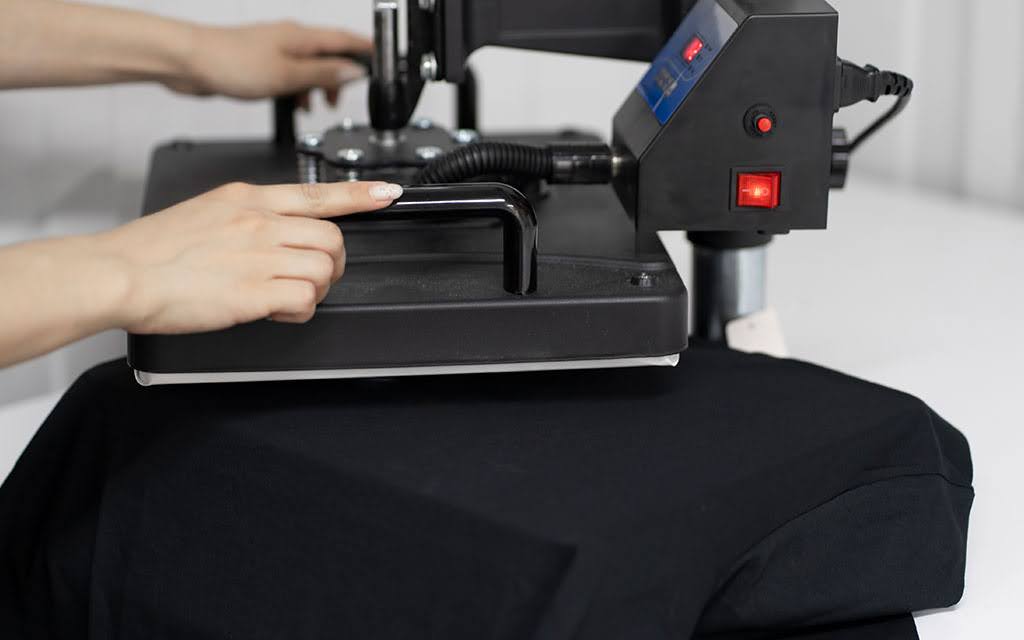
Screen printing considerations
Screen printing favors smooth, midweight cotton or cotton-poly blend fabrics because these materials provide stable, consistent surfaces that accept plastisol or water-based inks reliably without excessive absorption that dulls colors or poor adhesion that causes cracking and peeling. Brands such as Gildan and JERZEES offer some of the best blank hoodies for printing because their flat fabric faces take both plastisol and water-based inks well, creating sharp edges, solid color coverage, and prints that last through dozens of washes without significant fading or deterioration.
Plastisol inks give strong opacity on dark fabrics because the thick, plastic-based formula sits on top of fibers rather than soaking in, creating bright colors that stand out even on black or navy backgrounds, though plastisol creates a thicker hand feel that some customers notice and dislike compared to softer alternatives. Water-based inks give a softer hand on light colors because they soak into fibers rather than sitting on the surface, creating prints that feel almost like part of the fabric rather than a separate layer, though they require more careful color matching and may not provide adequate opacity on dark fabrics without special underbase layers or multiple passes.
DTG and DTFlex compatibility
DTG printing works best on high-cotton, ring-spun options like Bella + Canvas and Cotton Heritage M2580 because these fabrics provide exceptionally smooth surfaces that reproduce fine details, subtle color gradients, and photographic images with clarity that coarser fabrics cannot match. The technology produces soft-feel, photo-realistic prints that suit detailed artwork on pullover hoodies when you need to reproduce complex designs, full-color photographs, or artwork with subtle shading and fine lines that would require prohibitively expensive screen setups if attempted with traditional screen printing methods.
DTFlex, also known as direct-to-film, proves more forgiving with tri-blends and thicker or textured fabrics because the transfer process doesn’t depend on ink soaking into fibers the way DTG does, making it work on materials that would reject or poorly absorb DTG inks. DTFlex yields crisp, vibrant results on bulky hoodies where DTG struggles because thickness variations, texture, or fabric treatments interfere with the precise ink droplet placement that DTG requires for clean reproduction and proper color mixing at microscopic scales.
Sublimation and all-over printing
Sublimation requires polyester or very high polyester content because the dye-sublimation process converts solid dye particles into gas that bonds with polyester molecules at the molecular level, creating permanent color that becomes part of the fabric rather than sitting on the surface where it can fade, crack, or peel. All-over print work and cut-and-sew designs use polyester-rich blanks such as recycled polyester zip hoodies or Printful’s all-over print options because these materials support the sublimation process while allowing complex pattern placement that covers entire garments including seams and traditionally difficult areas.
Sublimation locks color into fibers with no noticeable hand-feel change because the dye becomes part of the polyester molecules rather than adding a separate layer on the fabric surface, and it supports seam-to-seam coverage for pattern-heavy sportswear that requires continuous designs flowing across traditional garment construction boundaries. Designers should expect limitations in color range compared to other printing methods because sublimation works best with lighter base colors and cannot produce white or light colors on dark backgrounds, and they must avoid natural-fiber garments completely because cotton, linen, and other plant-based materials do not bond with sublimation dyes the way polyester does, resulting in faint, washed-out colors that disappear after the first washing.
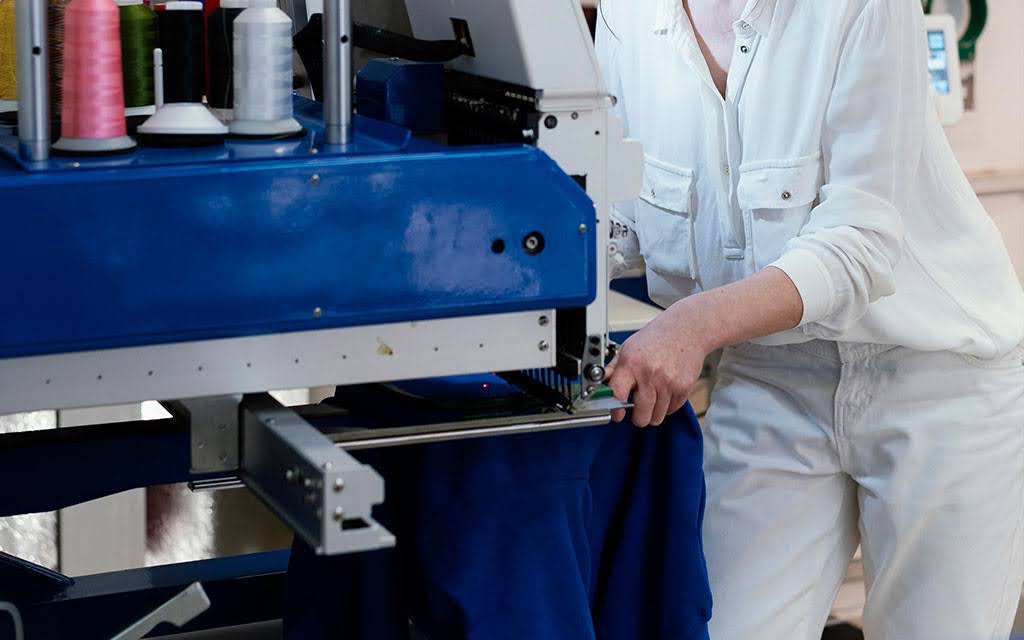
Embroidery and heat transfer
Embroidery gives a premium finish for logos and left-chest branding because the raised, textured appearance of stitched designs conveys quality and permanence that printed graphics cannot match, making embroidery the preferred choice for corporate apparel, uniforms, and premium positioning where perceived value matters as much as actual decoration cost. Stable, tightly knit fabrics like Carhartt, Champion, and Premium Eco Hoodie handle stitching and reinforcement well because their dense weaves and quality construction prevent puckering, thread pull-through, and distortion that can ruin embroidered designs on cheaper blanks with loose knits or thin fabrics that cannot support the tension created by thousands of stitches.
Decoration area is limited with embroidery compared to other types of hoodie printing methods because extremely large designs become prohibitively expensive as stitch counts climb into hundreds of thousands, and very large areas of dense stitching can feel stiff and heavy rather than looking clean and professional. Sleeves and small chest logos work best for embroidery because these placements keep stitch counts manageable, costs reasonable, and appearance clean rather than overwrought or heavy.
Heat transfer handles complex colors and small runs across many brands including Gildan, JERZEES, and Bella + Canvas when heat settings, pressure, and timing match the specific fabric being decorated, making it versatile for orders too small to justify screen setup costs but too complex for simple vinyl cutting. Transfers can span the full front of pullover hoodies or wrap around sleeves because the process doesn’t require the flat surfaces that screen printing demands, but decorators must avoid bulky seams and zippers to prevent cracking, incomplete adhesion, or misplacement because uneven surfaces prevent the consistent heat and pressure required for proper bonding between transfer and fabric.
| Printing Method | Best Fabric Type | Best Blank Hoodie Examples | Key Advantages | Limitations |
| Screen printing | Midweight cotton or cotton-poly blends | Gildan 50/50, JERZEES NuBlend, Bella + Canvas midweight pullover | Cost-effective for large runs, vibrant colors, excellent durability | Setup costs for multi-color, limited detail reproduction |
| DTG (DTG printing) | High-cotton, ring-spun or airlume combed cotton | Bella + Canvas 3719, Cotton Heritage M2580, Gildan 18500 | Photo-realistic detail, no setup costs, soft hand feel | Slower production, higher per-piece cost, requires pre-treatment |
| DTFlex | Sturdy, textured, tri-blends, thicker fleeces | Premium Eco Hoodie, Adidas fleece hoodie, bulky treated fabrics | Works on difficult fabrics, vibrant colors, good detail | Transfer feel, durability concerns with poor application |
| Sublimation / all-over print | Polyester or high polyester blends | All-over print recycled zip hoodie, sport-specific polyester hoodies | No hand feel, seam-to-seam coverage, permanent color | Polyester only, limited color range, light fabrics preferred |
| Embroidery | Tightly knit, stable constructions | Carhartt, Champion, Premium Eco Hoodie | Premium appearance, excellent durability, perceived value | Size limitations, cost increases with complexity, stiff feel |
| Heat transfer | Wide range: cotton, blends, treated fabrics | Gildan, JERZEES, Bella + Canvas | Flexible for small runs, complex colors, quick turnaround | Durability concerns, hand feel, requires proper heat settings |
Choosing hoodies for different audiences and uses
Choosing the right blank hoodies depends heavily on who will wear them and how they’ll be used because different audiences have different priorities, from athletes who need moisture management to fashion customers who care about soft fabrics and modern fits. Different groups need different features like specific fabric types, particular fits and styling, and price points that match their expectations and budgets, which means understanding your target market guides blank selection more effectively than trying to find one perfect hoodie that works for everyone. Here’s a comprehensive guide to help you pick the best options for your specific needs while understanding how different decoration methods work with each audience segment.
Sport teams and activewear
Sport teams and activewear applications need fabrics that manage sweat effectively and allow free movement without restriction because athletes wearing binding or moisture-trapping garments perform worse and feel uncomfortable throughout practices, games, and workouts. Sport-Tek and Adidas have developed special fabrics that manage moisture by pulling sweat away from skin and helping it evaporate quickly while maintaining enough breathability to keep athletes cool during intense physical activity. Quarter-zip styles and raglan sleeve constructions work great for layering because they allow easy on-and-off without pulling over the head, and they can handle repeated wearing and washing without losing their shape, color, or performance characteristics the way cheaper alternatives might after just a few uses.
Streetwear and retail collections
Streetwear and retail collections focus heavily on fit, fabric feel, and contemporary styling because fashion-conscious customers notice and care about details like how a hoodie drapes, how soft it feels, and whether the cut looks current or dated. Brands like Bella + Canvas and AS Colour offer high-quality cotton with modern construction and trendy designs that appeal to retail customers who compare your products directly to established fashion brands rather than accepting whatever functional garment you provide. DTG proves perfect for detailed designs, complex artwork, and photographic images that help your products stand out in crowded retail environments, while screen printing still works well for bold logos and simple graphics that make strong visual statements.
Workwear and durable everyday use
Workwear needs to prioritize toughness and warmth above fashion considerations because workers wearing your branded hoodies in demanding conditions need garments that hold up to abrasion, frequent washing, weather exposure, and physical stress without falling apart or losing their professional appearance. Carhartt and Champion make heavy-duty hoodies specifically designed to handle tough jobs and harsh conditions, using heavier fabrics, reinforced stitching, and construction techniques that create genuinely durable garments rather than just marketing claims about quality that don’t hold up under real-world use.
Budget-conscious bulk orders and wholesale hoodies
For large orders where cost control determines project feasibility, managing expenses while maintaining acceptable quality becomes the primary challenge because even small per-unit price differences multiply dramatically across hundreds or thousands of pieces. Gildan and Hanes offer reliable options with extensive color selections and comprehensive sizing that work well for schools, corporate events, promotional campaigns, and large-scale giveaways where consistency matters more than premium feel or fashion-forward styling. Screen printing delivers the most cost-effective decoration for simple designs in large quantities because setup costs get distributed across many pieces rather than hitting each unit individually the way DTG or heat transfer does, making it the automatic choice for budget-conscious buyers who need clean, durable graphics without paying premium prices.
Practical shopping checklist and next steps for printing projects
Starting with a clear, comprehensive shopping checklist ensures your printing project runs smoothly from planning through delivery rather than encountering preventable problems that waste time, money, and materials while frustrating everyone involved in the process. First, define your target audience and specific use case as precisely as possible, whether you’re serving sport teams that need performance features, launching a retail drop that requires fashion-forward styling, creating corporate uniforms that project professional image, or producing promotional giveaways that prioritize cost control over premium features. This fundamental step helps you choose the best blank hoodie for your specific situation and determines whether you should customize primarily for comfort, durability, style, or cost efficiency because trying to optimize for everything simultaneously usually means compromising on the factors that actually matter most to your particular project and audience.

